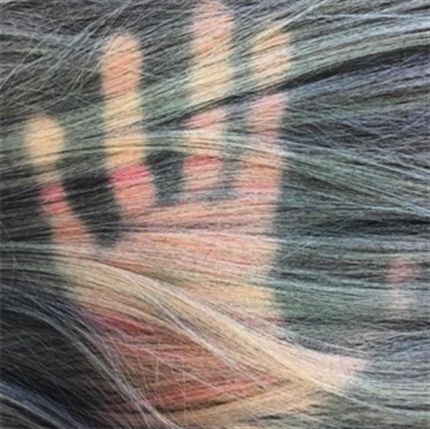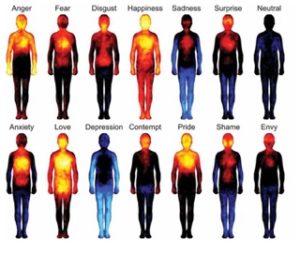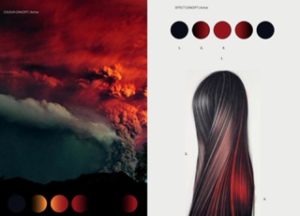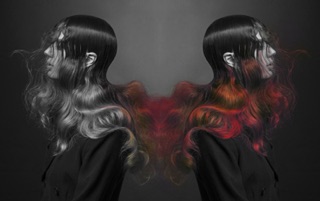This Haircolor Changes Before Your Very Eyes
Mood rings change color based on your emotions. Can you imagine your haircolor changing in the same way? Part witchcraft, part science, FIRE is the world’s first color-changing haircolor that responds to your environment and shifts shades, creating a completely unique, utterly amazing and constantly changing look. Get a close-up look at this groundbreaking hair color!

The shade starts off as black and shifts with heat.
Creators Kieran Tudor, a London session stylist, and Lauren Bowker, creative director of THE UNSEEN, collaborated to create this game-changing haircolor. FIRE is responsive to the environment by changing color with temperature fluctuations. Meaning, your clients could have blonde hair while inside and a cool blue color when they step outdoors. We told you…witchcraft! But not completely. There is a ton of science behind the line too.
That’s where the creators’ expertise comes in. As founder of THE UNSEEN, a company born from innovation and rooted in communicating unseen data in creative ways (such as emotion, pollution and brain waves), Lauren’s vision came to life through Kieran’s session styling experience. He’s a platform artist, British Hairdressing Newcomer of the Year recipient and repeat finalist in the British Hairdressing Awards and London Hairdressing Awards.
The two creators specifically chose to debut FIRE at London Fashion Week to raise awareness about creativity in science and to encourage young females into science and engineering. Here’s an in-depth look at this totally groundbreaking product.

Kieran posted this image on Instagram to illustrate how intense the color change can be.
How Does It Work?
“Essentially, the active part of the dye system is a complex, carbon-based molecule which undergoes a reversible reaction with itself. Above a certain temperature, one of the molecule forms is more stable than the other, and so a reaction takes place, producing a molecule with a slightly different absorption of light, and thus a different color.”
The haircolor can be used on prelightened hair and starts off as black, then shifts with heat. Interestingly, you can apply any haircolor to the hair, then top it with FIRE as a gloss, revealing patterns and gradients.
Does This Damage The Hair?
“Because of how we’ve formulated the dye, we’re confident there will be no damage to the scalp, and no significant effect on the hair fibers themselves (no more than typical semi-permanent dyes that is). That said, we still have work to do in optimizing the recipe, and assessing its toxicology.”

Color and heat can reveal our emotions.
Is The Dye Toxic?
“The dye itself is comprised of various components with different functions. Some of these are more toxic than others. The most toxic, however, we have replaced with other less toxic ingredients, which has required a significant amount of reformulation and testing to get the product to this stage. These chemicals that would normally be irritants on their own can be prevented from causing a negative effect with a process called ‘polymeric stabilization,’ in which chain-like molecules (polymers) wrap around the irritant.”
Have You Done Testing?
“Internally, we have begun longevity testing to create a permanent dye alongside our semi-permanent one, and we have colored a number of successful samples both on and off the body, in various colors for various seasons and bodily temperatures. For example, blue outdoors and blonde indoors, and a black-to-red dye which changes color as the user warms up to highlight emotion or blushing, through the hair.”

Inspiration boards for FIRE.
What Is The Inspiration Behind FIRE?
The data used to create the haircolor “comes from healthcare research around the environmental effects on thermoregulation through the skin. We wanted to launch the product at London Fashion Week to raise awareness around creativity in science in particular to encourage young females (our target audience) into science and engineering.” The color-changing technology has been used in garments, Kieran said, but this is the first application in haircolor.







